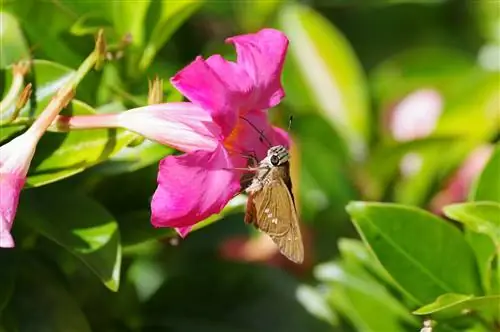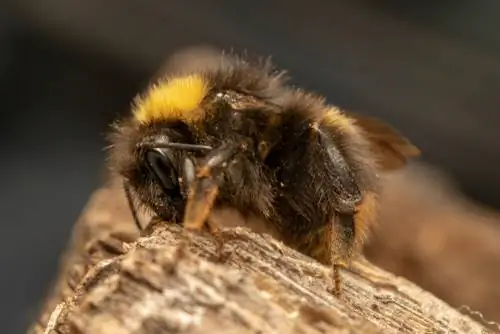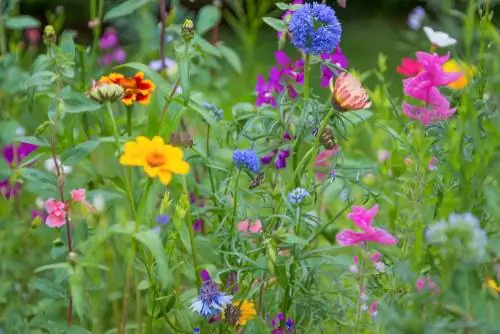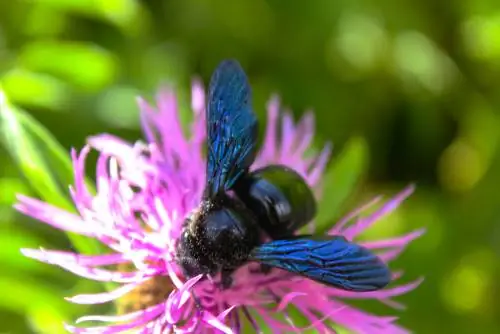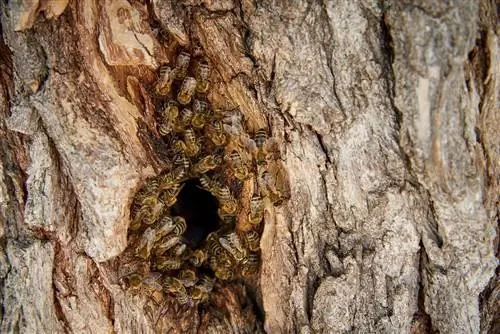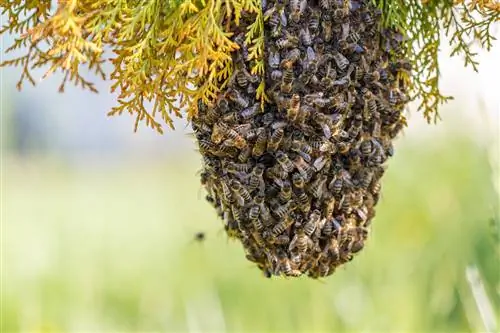- Author admin [email protected].
- Public 2023-12-16 16:46.
- Last modified 2025-01-23 11:22.
The flowers of the dipladenias are simply fantastic. With their dazzling colors and their captivating scent, they make our hearts beat faster. But does this also apply to bees? Are you interested in the flowers of dipladenias?
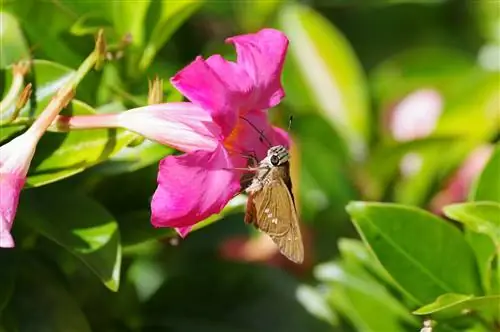
Is Dipladenia bee-friendly?
The Dipladeniais bee-friendly It not only attracts bees, but also bumblebees and butterflies. With its long flowering period, it is considered a permanent bloomer and impresses with its variety of flowers and its high nectar content. However, other flowers are even more valuable for bees.
Are the flowers of Dipladenia rich in nectar and pollen?
The flowers of Dipladenia containlots of nectar. However, theirpollen contentislow. That's why they are viewed as pasture for bees, but are unable to close gaps in their population due to their low pollen content.
What is important for Dipladenia to bloom for a long time?
So that the Dipladenia can bloom from spring to
autumn, it needs asunny location, plenty ofwaterandFertilizer It is also important to cut off the old flowers. Fertilizing Dipladenia should begin in March. The plant should be fed with a liquid fertilizer every two weeks until August.
Which insects do Dipladenia like?
Bees,Bumblebees,ButterfliesandPigeontailsespecially like this dog poison plant. They feed on the nectar that this plant provides in abundance.
Why is Dipladenia bee-friendly?
The Dipladenia is considered bee-friendly because of its long flowering period (from May to the end of September) and its manynectar-rich flowers. However, it is considered less valuable for bees compared to other typical flowers for container cultivation.
How are bees attracted to Dipladenia?
Bees are almost magnetically attractedto the scent of the flowers of the Mandevilla. The wintergreen Mandevilla laxa has a particularly strong scent. But other varieties also exude a scent from their funnel-shaped flowers, which are up to 7 cm wide, which attracts many insects.
Why is Dipladenia considered dangerous for pigeontails?
Pigeontails fly into the flower funnel and can stick to the stigma with their proboscisanddie. They naturally continue to whir while sucking and would die of exhaustion if they remained stuck.
Tip
Take care of the Dipladenia for long flowering enjoyment
The midday sun in particular can stress the Dipladenia and cause its flowers to wilt more quickly. Therefore, remember to water this climbing plant sufficiently and, if necessary, to place it in the shade in extreme heat.

